We all observe one or more reference stars in order to calibrate the relative flux of the target spectral profile. I always wondered how reliable are, for this purpose, the spectra which are included in the libraries like Miles, Elodie or Indo-US.
There are cases where spectra of the same star are contained in more than a library, so I tried to compare them. I expected to find more agreement between the spectra, there are indeed several cases in which the continua deviation is not negligible (also considering not or poor reddened starlight - info based on Miles catalog). I don't know why (changes that occur over time?). Follow some examples between Miles and NOAO Indo-US.
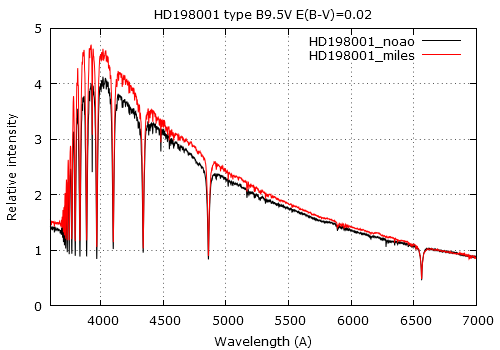
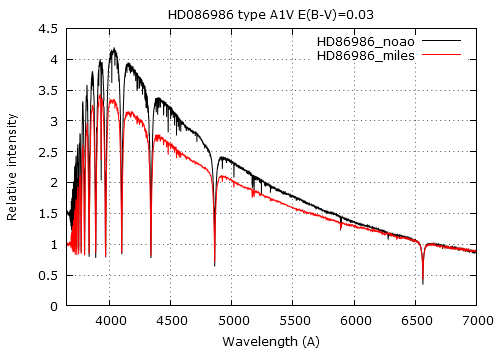
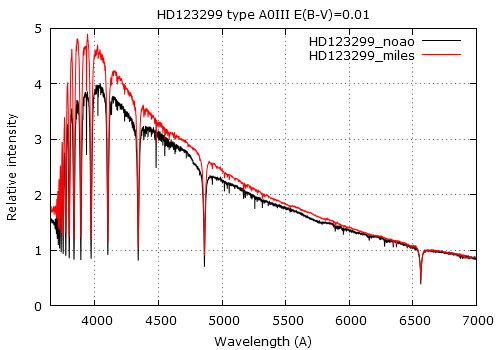
The HD114330 profile matches very well above ~4100A, below this value a large deviation becomes evident:
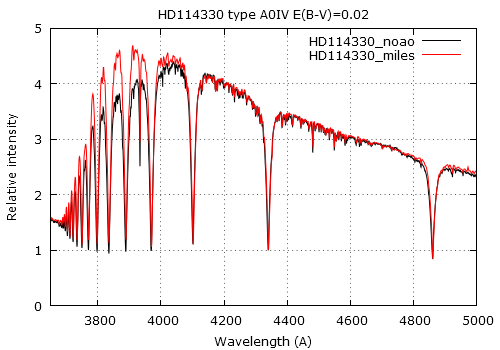
It's known that Indo-US spectra are dereddened (https://www.noao.edu/cflib/continuum.html). So, we should avoid any reddened star with this catalog. An example shows the problem (note this NOAO profile come from the original library, it is not present in the ISIS package):
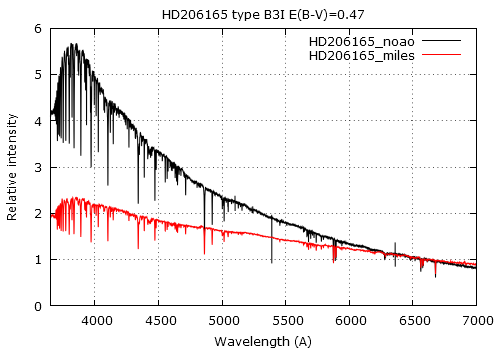
A comparison adding Elodie 3.1 profile. The Elodie profile deviates a lot below 4000A:
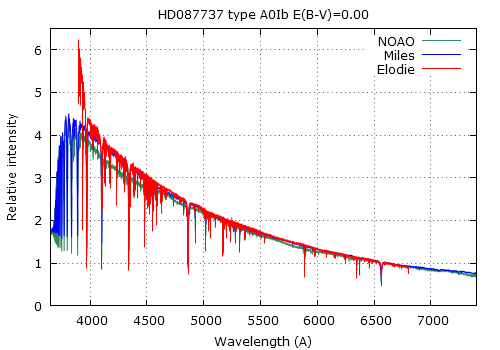
In the HD086986 spectra, Elodie 3.1 profile follows the Miles one until ~4000A, below this value the intensities suddenly rise overcoming all spectra.
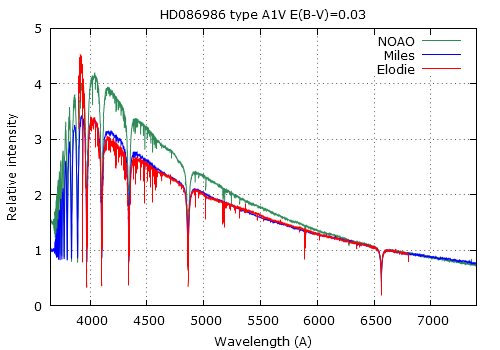
What do you think about?
I've done a cross-checks observing some Miles stars (Lhires III and 150 l/mm grating, spectra cropped from ~4100A) and calibrating other observed spectra with a response curve obtained by a Miles star. A comparison with the library spectra appears to confirm a good agreement (except for one case). But it was a small stars sample and I have not done the same for Elodie or Indo-US profiles. Has anyone done a similar pratical experience?
It seems clear that, to follow for example the spectral evolution of a spectroscopic target, the safest thing is to choose a reference star for all observers as soon as possible (before starting any observation is the best way). Anyway I think it would be very useful to know which star/profile of library spectrum is valid for the relative flux calibration purpose. This should lead to have comparable results regardless of the adopted reference star. Is this a dream or are we too much demanding?
I read about professional spectrophotometric standard stars (some are included in the ISIS package). Unfortunately they are few and a lot of them are very faint for amateur equipments (I think).
Have a clear skies!
Paolo
PS: sorry for my bad English...